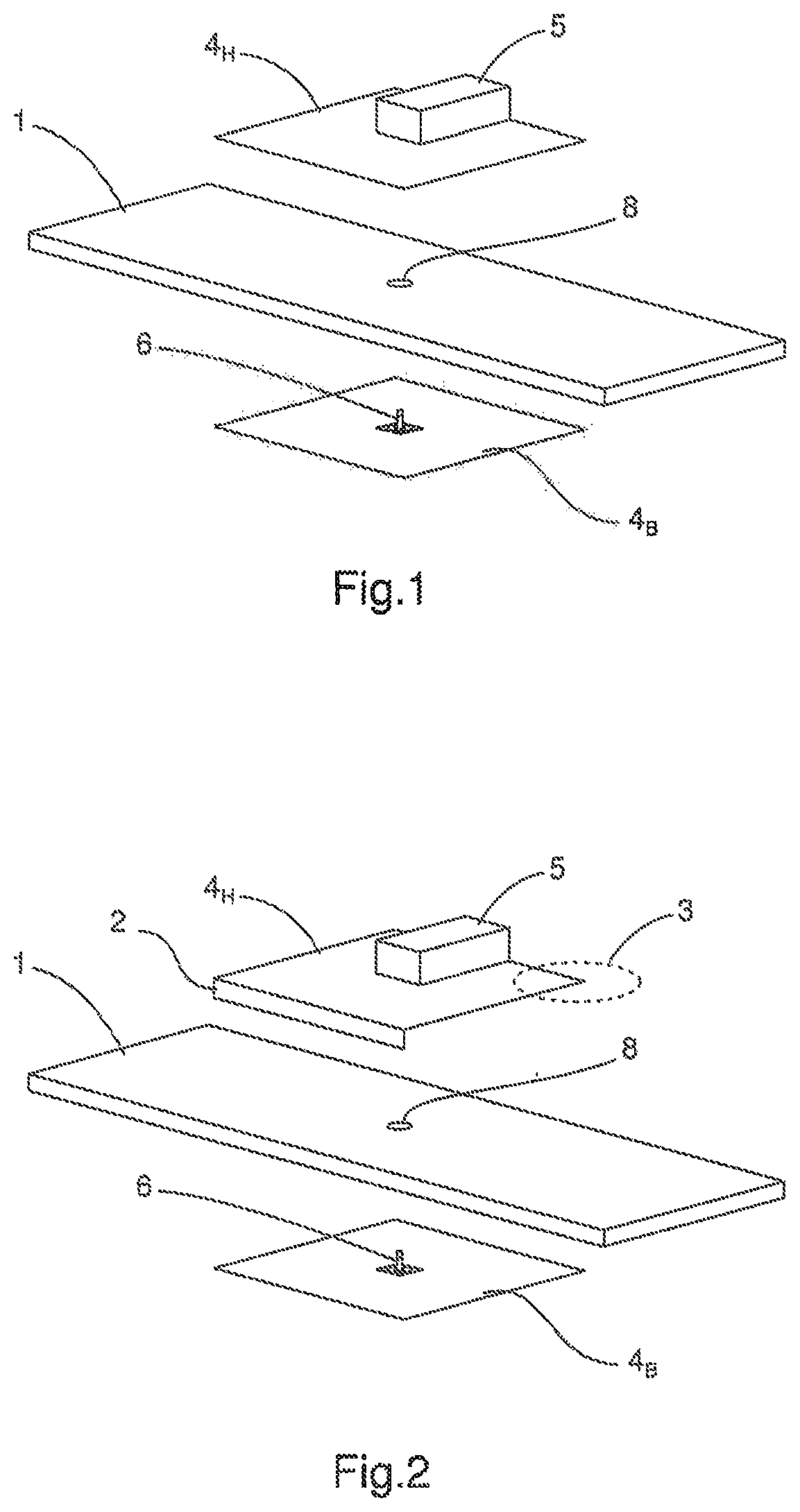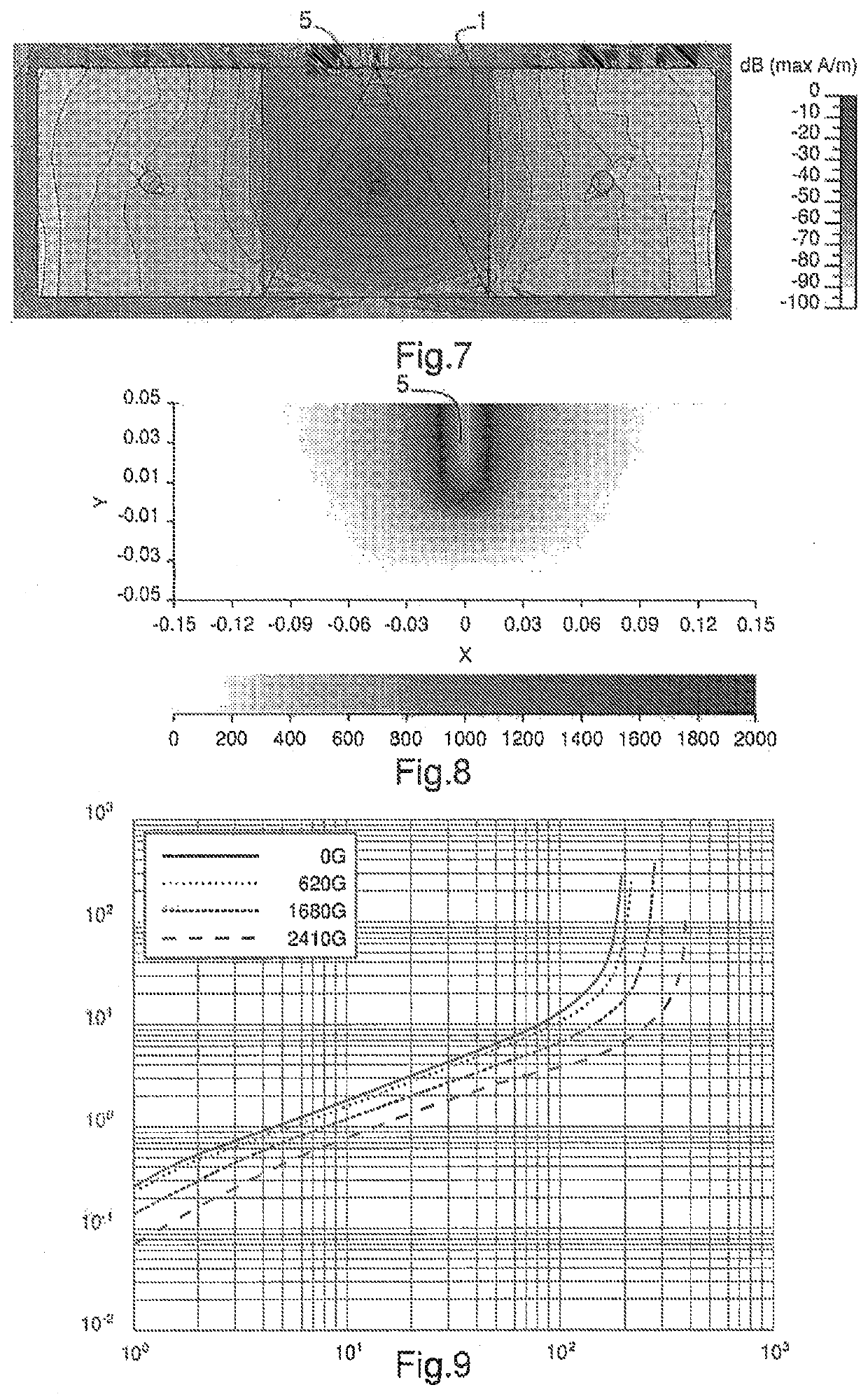Antenna with partially saturated dispersive ferromagnetic substrate
- Summary
- Abstract
- Description
- Claims
- Application Information
AI Technical Summary
Benefits of technology
Problems solved by technology
Method used
Image
Examples
third embodiment
[0079]FIG. 4 schematically, laterally cross-sectionally represents an antenna according to the invention.
[0080]This embodiment is similar to the second embodiment wherein the excitor 6 is no longer arranged at the centre of the ferrite and passing through it, but on an edge of the ferrite so as to extend between the mass plane 4B and the radiating portion 4H, at the level of the opening of the second embodiment. The excitor 6, the radiating portion 4H, the short-circuit 2 and the mass plane 4B thus form a loop, the antenna also being an antenna of the loop type.
[0081]FIG. 6 is a magnetic field mapping representing the distribution of the radiofrequency magnetic field in the dispersive ferrite of an antenna as a top view according to the first embodiment of the invention with no magnet, and FIG. 7 is a magnetic field mapping representing the distribution of the radiofrequency magnetic field in the dispersive ferrite of an antenna as a top view according to the first embodiment of the...
first embodiment
[0097]FIG. 14 is a graph representing the reflection coefficient S11 of an antenna according to the invention in the absence (SA curve—“no magnet”) or in the presence (AA curve—“with magnet”) of a permanent magnet of 2000 G, according to the frequency (in MHz). The antenna is here of the monopole type.
second embodiment
[0098]FIG. 15 is a graph representing the reflection coefficient S11 of an antenna according to the invention in the absence (SA curve) or in the presence (AA curve) of a permanent magnet of 2000 G, according to the frequency (in MHz). The antenna is here of the semi-open type.
[0099]FIG. 16 is a diagram of radiation of an antenna according to the first embodiment of the invention in the absence (SA curve) or in the presence (AA curve) of a permanent magnet of 2000 G.
[0100]The antenna with no magnet is an omnidirectional antenna of low gain, while the antenna of the monopole type with a magnet according to the invention is directional and has a greater gain in all directions. FIG. 17 is a diagram of radiation of an antenna according to the second embodiment of the invention in the absence (SA curve) or in the presence (AA curve) of a permanent magnet of 2000 G.
[0101]The antenna with no magnet is a directional antenna of low gain, while the semi-open antenna with a magnet according to...
PUM
 Login to View More
Login to View More Abstract
Description
Claims
Application Information
 Login to View More
Login to View More - R&D
- Intellectual Property
- Life Sciences
- Materials
- Tech Scout
- Unparalleled Data Quality
- Higher Quality Content
- 60% Fewer Hallucinations
Browse by: Latest US Patents, China's latest patents, Technical Efficacy Thesaurus, Application Domain, Technology Topic, Popular Technical Reports.
© 2025 PatSnap. All rights reserved.Legal|Privacy policy|Modern Slavery Act Transparency Statement|Sitemap|About US| Contact US: help@patsnap.com



